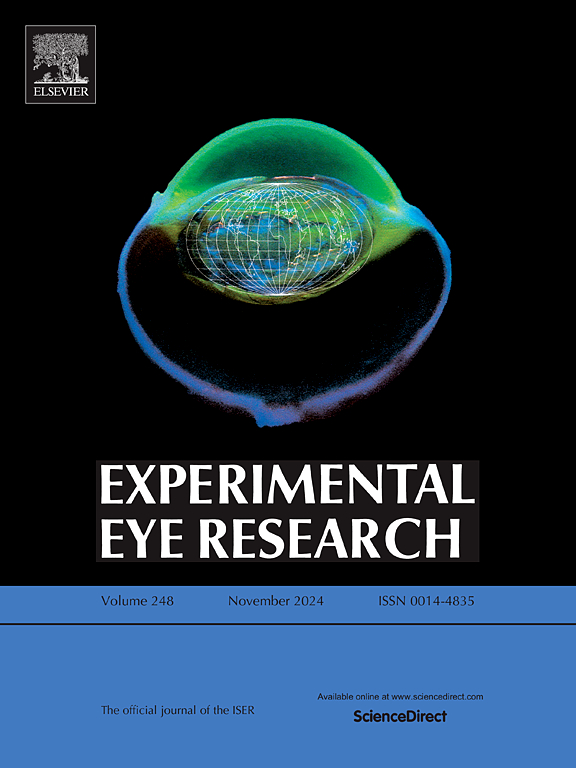MiR-224-3p regulates ferroptosis and inflammation in lens epithelial cells by targeting ACSL4
IF 3
2区 医学
Q1 OPHTHALMOLOGY
引用次数: 0
Abstract
In this study, we investigated the expression levels of miR-224-3p and inflammatory factors in the lens epithelium of patients with high myopia cataract (HMC) to determine how miR-224-3p/ACSL4 affects ferroptosis and inflammation in human lens epithelial cells (HLECs). The capsule tissues (including lens epithelial cells) of 36 patients with HMC and 36 patients with age-related cataract (ARC) were taken respectively. 18HMC and 18ARC capsule tissues were selected for RNA sequencing (RNA-Seq) and the rest were used for qPCR assays. The expression of miR-224-3p and ACSL4 in the capsules of patients was detected by qPCR, and RNA was extracted from each of the six capsules. To evaluate ferroptosis and inflammation, the levels of expression of ACSL4, GPX4, TFR1 and IL-6 was determined by immunohistochemistry, Transmission electron microscopy image showed the structure of mitochondria. The differential expression of mir-224-3p was identified through RNA sequencing, with its expression significantly increased in HMC. As a result, mir-224-3p was chosen for further experimentation. The expression levels of ACSL4, TFR1 and GPX4 varied between HMC and ARC. Target Scan predicted a direct binding site between mir-224-3p and ACSL4. The results showed that the expression levels of miR-224-3p, TFR1 and IL-6 in the HMC patients were significantly greater than those in ARC. ACSL4 and GPX4 in HMC were considerably lower than those in ARC. Electron microscopy images revealed that the mitochondria of HMC were significantly shrunken compared to those of ARC. So it was thought that ferroptosis and inflammation occured in HMC patients. A dual-luciferase report found miR-224-3p regulated ACSL4. PCR and WB assays revealed that ACSL4 was the downstream target gene of miR-224-3p. We also found that miR-224-3p promoted the proliferation and migration of HLECs. TNF-α (20 ng/mL) induced an inflammatory response in HLECs. Also, miR-224-3p effectively inhibited ferroptosis in HLECs induced by erastin, meanwhile the expression levels of Fe2+, MDA, ROS, and TFR1 were reduced, while GPX4 and GSH expression levels were elevated. The level of expression of IL-6 was decreased. Additionally, miR-224-3p increased the viability of HLECs by regulating ferroptosis and inflammation via ACSL4 targeting.
求助全文
约1分钟内获得全文
求助全文
来源期刊

Experimental eye research
医学-眼科学
CiteScore
6.80
自引率
5.90%
发文量
323
审稿时长
66 days
期刊介绍:
The primary goal of Experimental Eye Research is to publish original research papers on all aspects of experimental biology of the eye and ocular tissues that seek to define the mechanisms of normal function and/or disease. Studies of ocular tissues that encompass the disciplines of cell biology, developmental biology, genetics, molecular biology, physiology, biochemistry, biophysics, immunology or microbiology are most welcomed. Manuscripts that are purely clinical or in a surgical area of ophthalmology are not appropriate for submission to Experimental Eye Research and if received will be returned without review.
 求助内容:
求助内容: 应助结果提醒方式:
应助结果提醒方式:


